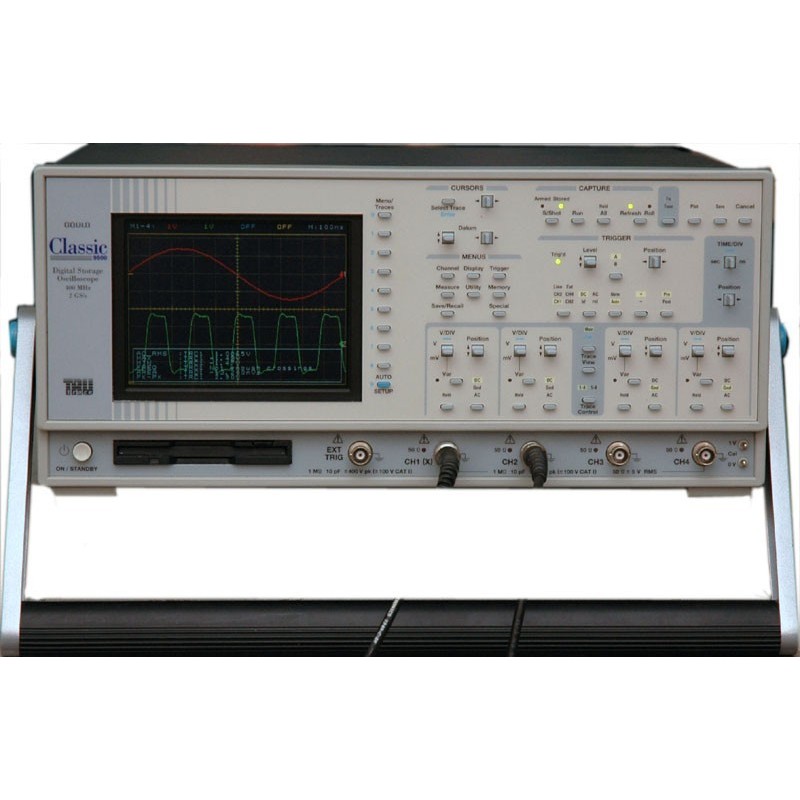














Classic 9500
For users in the world of telecoms, high speed components and fast electronics the Classic 9500 will provide time saving methods of acquisition, measurement and display, while for those who have very specialized needs, the Classic 9500 can be customized to a very high level.
Key Features & Options
2 GS/s Single Shot Sample rate
400 MHz Bandwidth
4 Channels
Calibrated Input Offset
3.5" MS-DOS Floppy Disk
Color LCD Display
Powerful Trigger Tools
Fast Fourier Transform (FFT)
User Scaling
Limits Testing
Auto-Plot, Auto-Save
1 MByte Memory per Channel
Custom Measurements
Advanced Sequences
Advanced Analysis
500 MByte hard disk
1 MByte RAM disk
IEEE-488.2, RS-423 & Centronic I/O
Integral Thermal Plotter
500 MHz Active and Differential Probes (plus a full range of passive probes)
High on performance ... low on price!
At last there's a high performance 4 channel DSO at a price you won't believe!
The Classic 9500 has a 2 GS/s Sample Rate, wide bandwidth, optional 500 MByte Hard Disk and 1 MB store. Included, as standard, is a full range of features often only available as options elsewhere. Features such as Sophisticated Triggering, Color Display, FFT (including averaging and log-log scaling) and 50 kByte memory.
For users in the world of telecoms with high speed components and high speed electronics, the Classic 9500 will provide time saving methods of acquisition measurement and display, while for those users with very specialized needs, the range of options allows a high level of product customization.
In addition, the Classic 9500 provides complete solutions to demanding high speed test applications such as Power Semiconductor Testing, Telecoms Serial Data Eye Diagram Testing, TV Jitter Measurement, IGBT/GTO Switching Power in Motor Drives and High Speed Logic Timing.
The 9500 can accurately evaluate high speed data streams by locating the area of interest with its gated trigger system, count or divide with clock phase shifting. Utilizing the 2 GS/sec transient sample rate and persistence mode allows timing and jitter errors to be measured.
Capture of fast events requires a high sampling rate to preserve waveform details but can also need large amounts of memory if the events are widely spaced. Segmenting the overall acquisition memory into a number of smaller sections makes very efficient use of memory. The Classic 9500 provides up to 2000 segments at 500 sample stores with the 1 MByte memory option.
High speed transient capture clearly showing timing differences. Here timing skew is measured to within a nanosecond.
The Fast Fourier Transform (FFT) function allows live analysis of up to 32 k points. All FFTs can be averaged from 2 to 128 times, improving the signal to noise ratio to as much as 70 dB. Equivalent Time Sampling (ETS) into 50 kByte memory extends the FFT range to the full bandwidth.